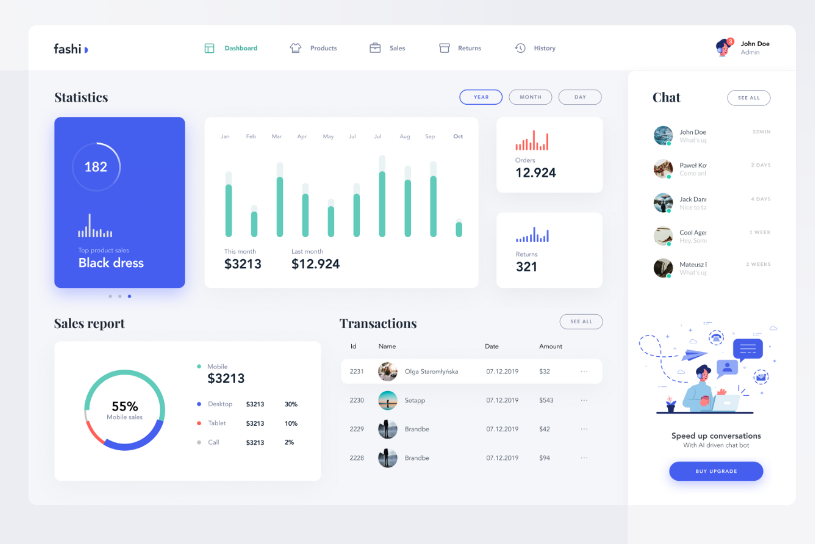
In the ever-evolving landscape of digital applications, the core app dashboard stands as a central hub, orchestrating a symphony of functionalities to provide users with a seamless and intuitive experience. This pivotal element serves as the nerve center, offering insights, controls, and accessibility to various features within an application. In this article, we delve into the significance of core app dashboards, exploring their functionalities, design principles, and the transformative impact they have on user engagement.
The Heart of Interaction:
Imagine the core app dashboard as the beating heart of an application, pulsating with information and functionalities that users rely on. Whether it’s a project management tool, a fitness app, or a financial platform, the dashboard acts as a gateway, presenting a snapshot of critical data and actions at a glance.
One of the primary purposes of a core app dashboard is to streamline user interaction. By consolidating essential features and insights in one central location, users can efficiently navigate through the application without getting lost in a maze of menus and options. This user-centric approach enhances the overall experience, making it more intuitive and user-friendly.
Key Features and Functionalities:
The core app dashboard hosts a myriad of features tailored to meet the specific needs of the application and its user base. Some common functionalities include:
- Data Visualization:
- Graphs, charts, and visual representations of data provide users with a quick understanding of their current status or progress.
- Real-time updates and dynamic visual elements keep users informed about changes and trends.
- Customization Options:
- Personalization is key, allowing users to tailor the dashboard to display the information most relevant to their workflow.
- Widgets and drag-and-drop functionalities empower users to create a dashboard that aligns with their preferences.
- Quick Access to Key Actions:
- Direct links and shortcuts to frequently used features enable users to perform actions swiftly.
- One-click functionalities reduce the time and effort required to execute essential tasks.
- Notifications and Alerts:
- Proactive communication through notifications keeps users informed about important updates, deadlines, or changes within the application.
- Alerts draw attention to critical issues or events, ensuring users stay on top of their responsibilities.
- User Analytics:
- Insightful analytics tools embedded in the dashboard provide users with a deeper understanding of their usage patterns and performance metrics.
- Data-driven decisions become more accessible as users gain valuable insights into their interactions with the application.
Design Principles for an Effective Core App Dashboard:
Creating an effective core app dashboard requires a thoughtful approach to design. Here are some key principles to consider:
- Clarity and Simplicity:
- A clutter-free design ensures that users can quickly grasp the information presented.
- Clear labels and intuitive icons contribute to a user-friendly experience.
- Consistency:
- Maintain a consistent design language throughout the dashboard to create a cohesive and harmonious visual experience.
- Consistency in layout and color schemes aids in navigation and reinforces brand identity.
- Responsive Design:
- Ensure the dashboard adapts seamlessly to different screen sizes and devices, promoting accessibility for users on various platforms.
- Hierarchy of Information:
- Prioritize information based on its importance, placing critical data and actions prominently.
- Employ a hierarchical structure to guide users through different levels of information.
- User Feedback:
- Implement feedback mechanisms such as tooltips, pop-ups, and visual cues to keep users informed about the outcomes of their actions.
- User feedback is invaluable for refining the dashboard’s design and functionality.
Transformative Impact on User Engagement:
An intelligently designed core app dashboard can significantly impact user engagement and satisfaction. Here’s how:
- Enhanced Productivity:
- Streamlined access to key features reduces the time users spend navigating the application, boosting overall productivity.
- Quick and efficient workflows contribute to a positive user experience.
- Increased User Retention:
- A well-crafted dashboard caters to user needs and preferences, fostering a sense of familiarity and comfort.
- Users are more likely to remain loyal to an application that simplifies their tasks and provides a positive interaction environment.
- Empowered Decision-Making:
- Access to real-time data and analytics empowers users to make informed decisions.
- The dashboard becomes a tool for strategic planning and execution, contributing to the user’s success within the application.
- Positive User Perception:
- An aesthetically pleasing and functional dashboard contributes to a positive perception of the application.
- Users are more likely to recommend and speak favorably about an application that values their time and simplifies their experience.
Conclusion:
The core app dashboard is a linchpin in the world of digital applications, orchestrating a harmonious interaction between users and the diverse functionalities within an application. By adhering to design principles that prioritize clarity, simplicity, and user-centricity, developers can create dashboards that not only serve as efficient tools but also contribute to elevated user experiences. As technology continues to advance, the core app dashboard remains a beacon, guiding users through the complexities of digital landscapes with grace and efficiency.








